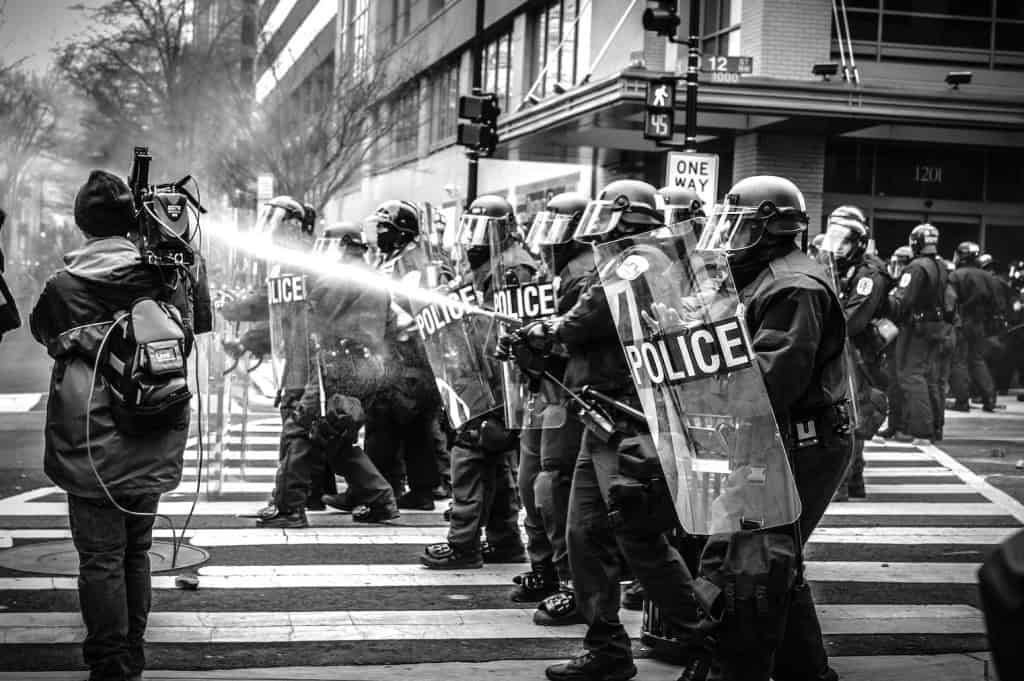Projectiles, broken glass, angry crowds and aggressive policing – reporting on protests and riots can be hazardous at the best of times.
During periods of anti-media sentiment, however, journalists can all-too often find themselves as targets of violence from multiple sides.
battleface provides cover to reporters and photographers heading into hostile environments – whether foreign or domestic – meaning we understand the steps necessary to mitigate the harm you may face in the thick of it.
We’ve compiled a list of the best resources available online for ensuring you stay safe, understand the risks at play and are supported by professional organisations.
Take a look below and feel free to share.

General safety advice
Live News: A Survival Guide for Journalists – published by the International Federation of Journalists (IFJ) the 135-page guide tackles preparation, conflict zones, hostile situations, medical and mental trauma, safety training and more.
Surviving riots and protests – battleface contributor Mike Left gives the lowdown on identifying violence and danger, navigating the environment safely and how to ‘bunker down’ if escape is not possible.
Hostile environment training
Staying safe in hostile environments – hostile environment training (HET) entails learning best practice protocols for operating in high-risk situations.
Conflict photography workshops – although most typically utilised for covering war, conflict photography workshops offer photojournalists a wealth of experience from veterans who’ve worked in high-risk environments.
Hostile Environment Training– resources for hostile environment awareness training aimed at journalists, humanitarians and more.

Personal protective equipment
Is body armour for the frontline all the same? – from helmets to stab vests, choosing the appropriate gear for covering protests is about assessing what risks you’re likely to face.
Tear gas/pepper spray/mace
Tear gas 101 – What is tear gas? How does it work? And how can you protect yourself against it? Find out all you need to know here.
Mace and pepper spray: FAQs – battleface correspondent Sasha Gayer recounts her own experience with being pepper sprayed in an enclosed space – and how she dealt with it.

Insurance for freelance journalists
Insurance for freelance journalists – provided by battleface, freelance journalist insurance is designed to ensure injuries and damage to equipment don’t lead to financial ruin.
Digital security and anonymity
Digital security for freelancers and the rest of us – produced by the Rory Peck Trust (see below), this guide to digital security will give you the skills to protect your devices and data from the authorities as well as hackers.

Professional organisations
The Committee to Protect Journalists (CPJ) is a non-profit dedicated to defending the rights of journalists to report the news safely and without fear of reprisals.
International Federation of Journalists (IFJ) is a global union of journalists representing more than 600,000 media professionals in more than 140 countries.
The Rory Peck Trust provides practical and financial support to freelance journalists and their families worldwide.
Frontline Freelance Register (FFR) is a representative body for freelance journalists, created and run by freelancers.









